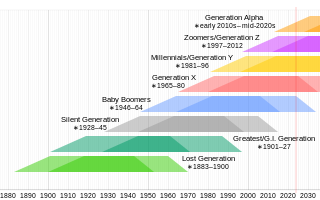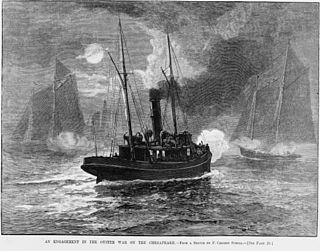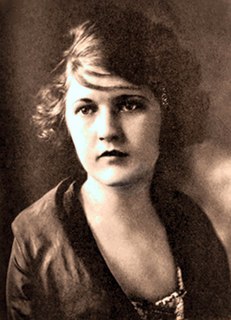 W
WThe American Century is a characterization of the period since the middle of the 20th century as being largely dominated by the United States in political, economic, and cultural terms. It is comparable to the description of the period 1815–1914 as Britain's Imperial Century. The United States' influence grew throughout the 20th century, but became especially dominant after the end of World War II, when only two superpowers remained, the United States and the Soviet Union. After the dissolution of the Soviet Union in 1991, the United States remained the world's only superpower, and became the hegemon, or what some have termed a hyperpower.
 W
WThe American frontier includes the geography, history, folklore, and cultural expression of life in the forward wave of American expansion that began with European colonial settlements in the early 17th century and ended with the admission of the last few territories as states in 1912. This era of massive migration and settlement was particularly encouraged by President Thomas Jefferson following the Louisiana Purchase, giving rise to the expansionist attitude known as "Manifest Destiny" and the historians' "Frontier Thesis".
 W
WBaby boomers are the demographic cohort following the Silent Generation and preceding Generation X. The generation is generally defined as people born from 1946 to 1964, during the post–World War II baby boom. The term is also used outside the United States but the dates, the demographic context and the cultural identifiers may vary. The baby boom has been described variously as a "shockwave" and as "the pig in the python." Baby boomers are often parents of late Gen Xers and Millennials.
 W
WGeneration X is the demographic cohort following the baby boomers and preceding the millennials. Researchers and popular media typically use birth years around 1965 to 1980 to define Generation Xers, although some sources use birth years beginning as early as 1960 and ending somewhere from 1977 to 1985. By this definition and U.S. Census data, there are 65.2 million Gen Xers in the United States as of 2019. Most members of Generation X are the children of the Silent Generation and early boomers; Xers are also often the parents of millennials and Generation Z.
 W
WGeneration Z, or Gen Z for short, are the demographic cohort succeeding Millennials and preceding Generation Alpha. Researchers and popular media use the mid-to-late 1990s as starting birth years and the early 2010s as ending birth years. Most members of Generation Z are the children of Generation X and sometimes millennials.
 W
WThe Great Migration, sometimes known as the Great Northward Migration or the Black Migration, was the movement of 6 million African Americans out of the rural Southern United States to the urban Northeast, Midwest and West that occurred between 1916 and 1970. It was caused primarily by the poor economic conditions as well as the prevalent racial segregation and discrimination in the Southern states where Jim Crow laws were upheld.
 W
W W
WA kid hack was a horse-drawn vehicle used for transporting children to school in the late 19th and early 20th century in the United States. The word hack, meaning a horse-drawn cab, is short for hackney carriage. The vehicle was actually powered by both horses and mules, and usually loaded at the rear to avoid frightening the animals. In those days, most elementary children in rural areas attended one-room schools. A typical kid hack would serve all the farms in the area of the school, and usually transport under 20 children.
 W
WMillennials, also known as Generation Y, are the demographic cohort following Generation X and preceding Generation Z. Researchers and popular media use the early 1980s as starting birth years and the mid-1990s to early 2000s as ending birth years, with 1981 to 1996 a widely accepted defining range for the generation. Most millennials are the children of baby boomers and early Gen Xers; millennials are often the parents of Generation Alpha.
 W
WThere have been newspapers in North Carolina since the North-Carolina Gazette began publication in the Province of North Carolina in 1751. As of January 2020, there were approximately 260 newspapers in publication in North Carolina. While printed newspaper circulation has declined in the last 10 years, the total paid print circulation of newspapers in North Carolina is over 4 million. The newspapers with the largest paid circulation are The Charlotte Observer and The News & Observer of Raleigh. The largest number of North Carolina newspapers are focused on local news at the county level. In addition to print versions of North Carolina newspapers, most newspapers have online websites, as well as Facebook and Twitter accounts for distribution of news media and interacting with their community.
 W
WMost of the newspapers started in North Carolina in the 18th-century no longer exist. The first newspaper, the North Carolina Gazette was published in New Bern, North Carolina. These defunct newspapers of North Carolina were replaced by newspapers that started in the 19th-century. With the progress of technology, introduction of social media, and trend towards corporate conglomerate ownership many newspapers did not survive in the 20th and 21st-century.
 W
WThe Oyster Wars were a series of sometimes violent disputes between oyster pirates and authorities and legal watermen from Maryland and Virginia in the waters of the Chesapeake Bay and the Potomac River from 1865 until about 1959.
 W
WIn the context of the 20th-century history of the United States, the Second Great Migration was the migration of more than 5 million African Americans from the South to the Northeast, Midwest and West. It began in 1940, through World War II, and lasted until 1970. It was much larger and of a different character than the first Great Migration (1916–1940), where the migrants were mainly rural farmers from the South and only came to the Northeast and Midwest.
 W
WDuring the Swedish emigration to the United States in the 19th and early 20th centuries, about 1.3 million Swedes left Sweden for the United States of America. While the land of the U.S. frontier was a magnet for the rural poor all over Europe, some factors encouraged Swedish emigration in particular. The religious repression practiced by the Swedish Lutheran State Church was widely resented, as was the social conservatism and class snobbery of the Swedish monarchy. Population growth and crop failures made conditions in the Swedish countryside increasingly bleak. By contrast, reports from early Swedish emigrants painted the American Midwest as an earthly paradise, and praised American religious and political freedom and undreamed-of opportunities to better one's condition.
 W
WWomen's clothing in the early 1900's was heavily based on what men considered to be attractive. This is due to the social patriarchy which still labelled women to be the property of her husband when she got married, hence making her outward appearance to be reflective of his status. The Women's Suffrage Movement also changed women's clothing, as they became more practical due to the Victorian dress reform. This lead to the population of pants and other traditionally male items of clothing.